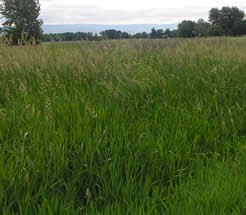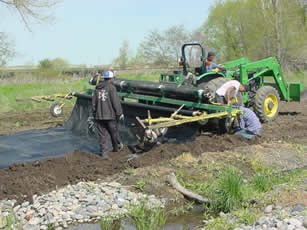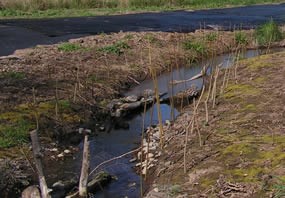|
"Good" and "bad" are relative terms. It depends on who you are and what you are trying to accomplish. When restoring a creek, or other ecosystem, native plants are usually preferred, because they generally offer the most benefit for native animals. In this case they are the "good" plants. Non-native plants, especially aggressive invasives, can displace native plants. These non-natives often do not provide the nutrients and/or shelter needed by native animals.
Vegetation plays an important role in the Doan Creek Restoration Project. Plants in the creek add oxygen to the water. Vegetation along a creek provides erosion control and shade to keep water temperature cool in the summer. Plants eligible for use include native grass species (wheatgrass and Idaho fescue), native shrubs (golden current, elderberry, and chokecherry) and native tree species (black hawthorn, willow, birch, alder and cottonwood).

NPS photo 
NPS photo Before native plants could be planted, the reed canarygrass had to be removed. The park mowed the existing stand and then applied herbicide. Afterwards the ground adjacent to the new streambed was covered with black mulch cloth to prevent new reed canarygrass plants from growing from seeds or rhizomes. Beyond the mulch cloth herbicides are periodically applied; reed canarygrass removal is an ongoing process. 
NPS |
Last updated: March 1, 2015
